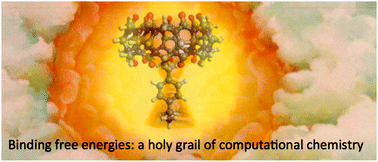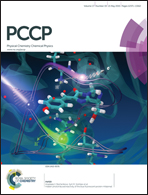Predicting accurate absolute binding energies in aqueous solution: thermodynamic considerations for electronic structure methods
Abstract
Recent predictions of absolute binding free energies of host–guest complexes in aqueous solution using electronic structure theory have been encouraging for some systems, while other systems remain problematic. In this paper I summarize some of the many factors that could easily contribute 1–3 kcal mol−1 errors at 298 K: three-body dispersion effects, molecular symmetry, anharmonicity, spurious imaginary frequencies, insufficient conformational sampling, wrong or changing ionization states, errors in the solvation free energy of ions, and explicit solvent (and ion) effects that are not well-represented by continuum models. While I focus on binding free energies in aqueous solution the approach also applies (with minor adjustments) to any free energy difference such as conformational or reaction free energy differences or activation free energies in any solvent.


 Please wait while we load your content...
Please wait while we load your content...